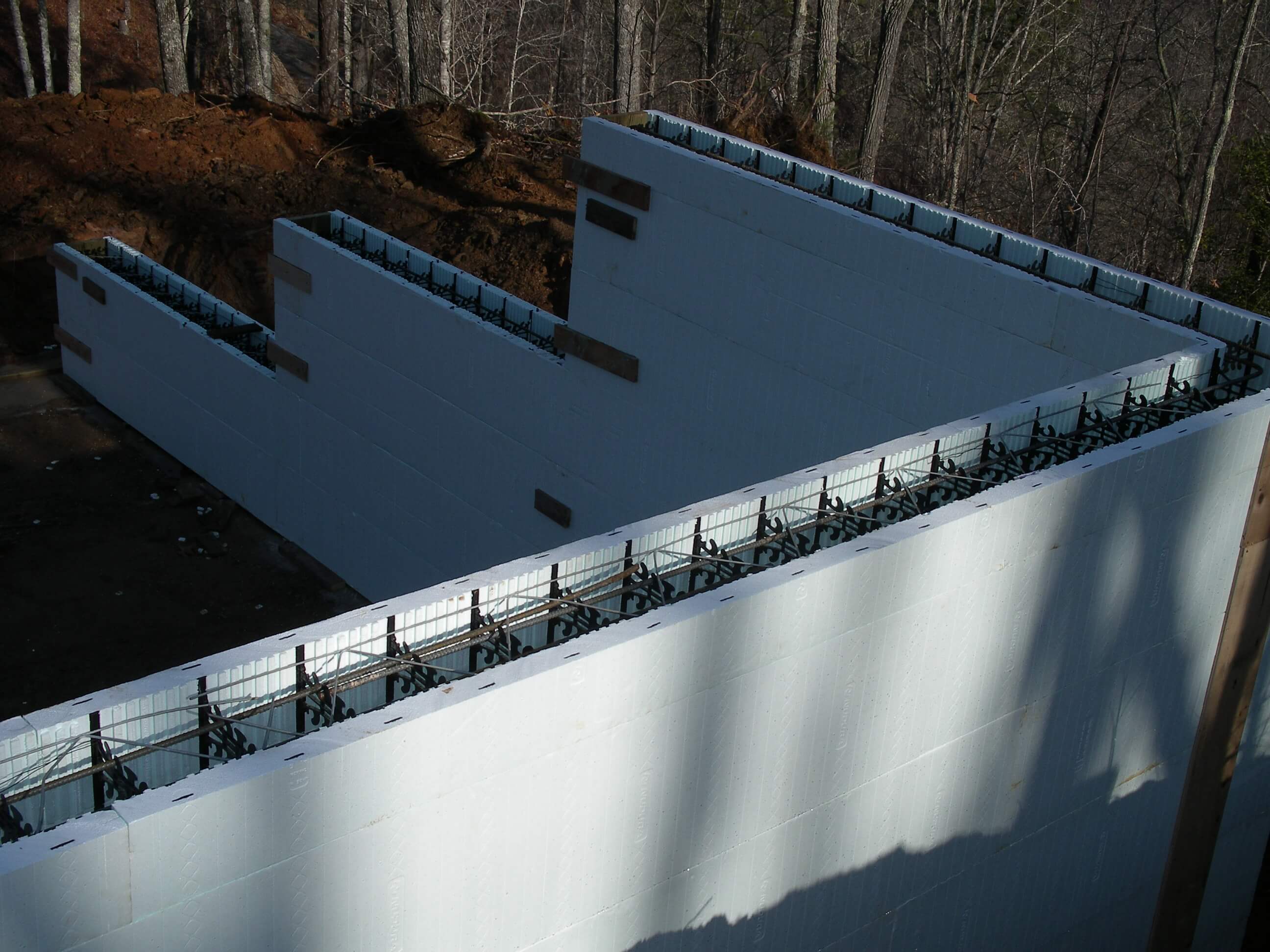Frost Proof Footings
With cold weather around I thought this would be a good time to discuss the use of frost proof footings. The temps here in western North Carolina will be single digits this evening with 20-30 mph winds. The ground is hard packed frozen until spring here in the mountains. The use of EPS foam in two inch thickness makes a huge difference especially when used with ICF’s (insulated concrete forms).
The idea is so simple for climates that have several months of cold weather through the winter seasons. I first read about them years ago used in many of the Scandinavian countries. It is common place there to install them during the foundation process. The use of foam laid next to the icf foundation is the equivalent of having the footing at a depth of 5-6 feet. Now, I know many are thinking heat rises so why would I want to insulate the foundation?
The reason lies in the various methods of heat/cold transfer. Radiant, conductive, and convective heat transfer is the three ways we discuss heating and cooling of the structural envelope. The frost proof footing eliminates the cold frozen ground from robbing BTU’s from the structure through conductive transfer.
The overall cost saving of using foam around the footing perimeter far outweighs foregoing it. It is very inexpensive to install and will pay back big dividends when it comes to keeping the structure warm during the cold season.
Here is a pic of the ICF perimeter of the building. You can see all of the 4×8 sheets of 2″ EPS foam that will go around the outside of the structure for the frost proof footings. Another big advantage of the ICF is that I set this footprint in the morning and poured them the same day with several pump trucks full of concrete (over 360 linear feet of wall). It is much faster than dealing with masonry units of block. The R value of the ICF is over 60 as well which is a big plus.
